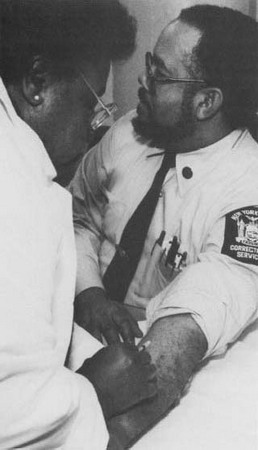Tuberculin test
Tuberculin tests are administered to patients for the diagnosis of tuberculosis (TB). Tuberculosis is a serious bacterial disease that attacks the lungs. The tubercle bacillus that causes the disease was discovered by German bacteriologist Heinrich Robert Koch (1843-1910) in 1882. Eight years later, Koch was the first researcher to find a way of diagnosing the disease. Koch's test to demonstrate sensitivity to the tubercle bacilli won him the 1905 Nobel Prize for medicine.
Testing Methods
There are several ways of testing for the presence of TB. In the laboratory, sputum (spit or phlegm) from a person can be examined for the presence of the TB bacteria.

More common are those tuberculin tests which are administered on the skin. The three types of skin test used consist of either a patch test, tine test (multiple puncture) or an injection. In each case a derivative of tuberculin (measured in TU or "tuberculin units") is used and placed on the skin. Forty-eight hours later, the scratched area is examined for inflamation. If there is a hardening of the skin on the scratched area, the hardening indicates that the person was at some time infected with the TB bacteria.
A positive test, however, does not indicate that a person has active TB. Anyone who has been immunized against TB will likely show a positive result. The skin test currently used was developed by Dr. Florence B. Seibert, a biochemist. Seibert first isolated the active protein in tuber-culin and used it to make TB skin tests more accurate. The substance used in a TB test is a purified protein derivative (PPD) which comes from the filtrates of laboratory cultures of tubercle bacilli. If a person shows an inflammatory reaction, a physician will usually recommend a chest X-ray to see if there is a spot on the lung. This would confirm that the disease is present in the body.